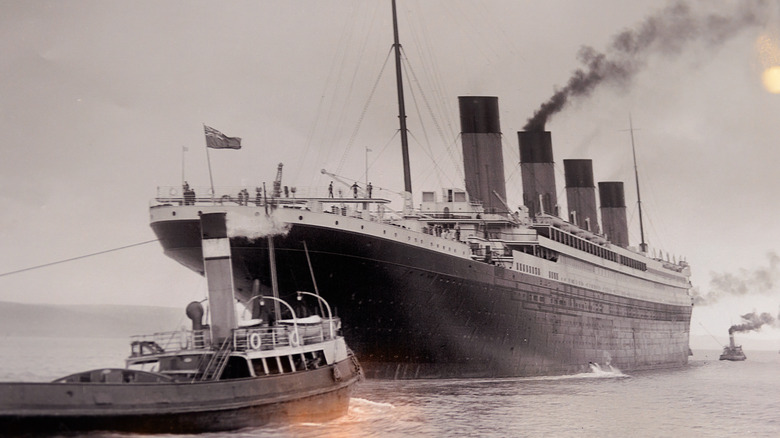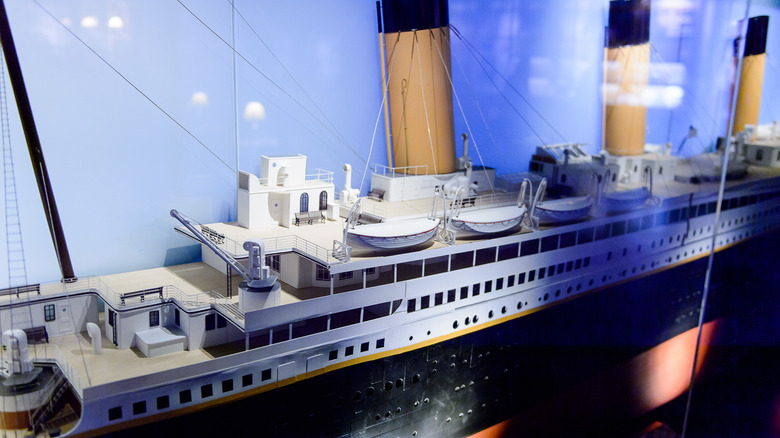The Titanic's First Class Passengers Were More Likely To Survive. Here's Why
The tragic sinking of the British RMS Titanic, per History, cost more than 1,500 lives. The doomed liner, which was boldly and naively deemed to be unsinkable, struck an iceberg late at night on April 14, 1912, reportedly remaining afloat for nearly three hours before it slipped beneath the waves entirely.
The shocking story has been told time and again, across various forms of media. Numerous contributing factors have been explored. A blazing-hot summer in the Caribbean strengthened the Gulf Stream and resulted, according to author Richard Corfield (per Science Illustrated), in "more icebergs in a smaller area than usual" in the region of Newfoundland, where the fatal collision occurred. Attempts to reduce construction costs may also have rendered the magnificent ship's hull vulnerable, while there simply weren't enough lifeboats to go around (they certainly weren't full to capacity either, per History On The Net).
Notably, passengers who had the luxury of traveling first class had greatly increased chances of survival. 44% higher odds, History estimates. Let's take a look at why.
Women, children, and the wealthy only?
The glorious vessel's first trip was a global event. History adds that some of the wealthiest and most famous people of the day were on board, including Macy's owner Isidor Straus, his wife Ida, and John Jacob Astor IV of the extraordinarily wealthy Astor family (his fortune was worth approximately $150,000,000 at the time, according to The National Archives). As the Belfast Telegraph reports, all three were sadly killed in the sinking, but survival rates were certainly higher among the richer passengers.
As per Titanic Universe, women and children were prioritized for spaces on the lifeboats. The water temperature of the surrounding ocean was so low that those adrift could be expected to survive no longer than around 15 minutes. Titanic Universe states that more than half of the third-class passengers died this way, and a heart-wrenching 92% of males in second-class died.
Benno Torgler, economics professor at Australia's Queensland University of Technology, explains this (per The Why Files). In Torgler's view, those with greater social status had better access to the staff and details about events unfolding on the Titanic. They would have been used to being prioritized in every sense by the crew, and the lifeboats were in far closer proximity to the first-class portion of the ship. Titanic Universe adds that a locked gate would have impeded the escape of third-class passengers. It's no surprise that the wealthier fared better in the chaotic efforts to escape.

